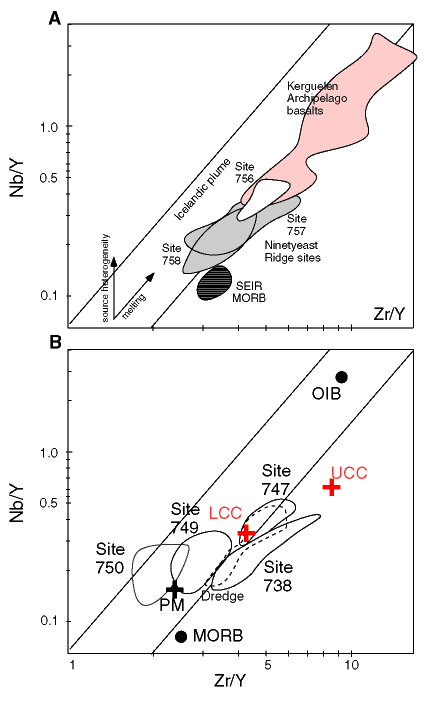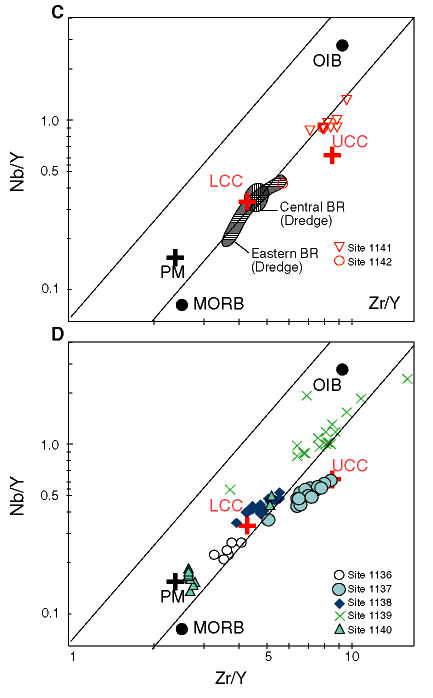Figure F31. A. The Nb/Y vs. Zr/Y plot (Fitton et al., 1997) has been used to distinguish between basalts derived from the Icelandic plume (data within the diagonal lines labeled "Icelandic plume") and mid-ocean ridge basalt (MORB) derived from the North Atlantic asthenosphere (data below the lower diagonal line). Fitton et al. (1997) showed that basalts derived from a common peridotite source by variable extent of melting define a trend parallel to these lines (see arrow labeled "melting"; melts formed by low extents of melting will have relatively high Nb/Y and Zr/Y and these ratios will decrease along this trend as extent of melting increases). Mantle heterogeneity is dominantly expressed by variations in Nb/Y (see arrow labeled "source heterogeneity"). The fields show 82-Ma to Holocene lavas associated with the Kerguelen plume. These lavas, tholeiitic basalts from Sites 756, 757, and 758 on the Ninetyeast Ridge and transitional to alkalic basalts from the Kerguelen Archipelago, define a trend that overlaps the lower boundary line. We infer that the Nb/Y and Zr/Y of the Kerguelen plume lie on this line. A representative field for Southeast Indian Ridge (SEIR) MORB is shown for comparison (see Fig. F8, caption for data sources). B. Fields for pre-Leg 183 sampling of basaltic basement from the Kerguelen Plateau. Dredge basalts from the CKP (dashed field) and drill sites 738, 747, 749, and 750. For comparison, averages are shown for MORB, primitive mantle (PM), lower and upper continental crust (LCC and UCC, respectively), and ocean-island basalt (OIB) (see captions for Figs. F20 and F25, for data sources). C. Fields for pre-Leg 183 sampling (dredges) of basaltic basement from Broken Ridge (Mahoney et al., 1995) and data for basalts from Sites 1141 and 1142. Except for one sample, the Broken Ridge basalts from Sites 1141 and 1142 lie at higher Nb/Y and Zr/Y, but all basalts from Broken Ridge lie along the lower boundary line, much like the 82-Ma to Holocene lavas shown in A. D. Data for basement lavas from the Kerguelen Plateau obtained at five Leg 183 drill sites. Generally, lavas from each site define distinct fields lying along the lower boundary line of the plume field. An exception is lava from Site 1137, which defines a trend toward UCC, much like basalts from SKP Site 738 in B. Basalts from these two sites are inferred to contain a component derived from continental crust.


![]()